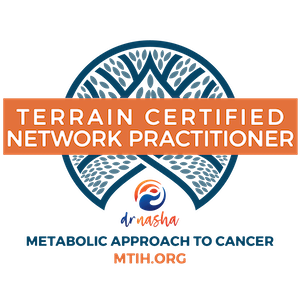
General dietary tips
Eating a whole foods diet helps you feel better, look better and improves the function of your vital organs by supplying a range of essential nutrients. A whole foods diet includes an assortment of fresh fruits and vegetables, whole grains like brown rice, barley, quinoa and oats, beans and pulses, nuts and seeds, dairy products, fish, eggs, and lean poultry. Drinking pure water hydrates, cleanses, and energises your body.
Improving absorption of nutrients
Absolutely KEY!!!! Nutrient deficiency is very common in older women because of digestive imbalances and absorption problems. Eating bitter greens or taking a few drops of a bitter herbal tincture before a meal can stimulate the body’s own digestive juices which enhance absorption of vitamins and minerals in food. Supplements to consider: Apple cider vinegar, hydrochloric acid, digestive enzymes, and probiotics (healthy bacteria).
Processing medications
It’s essential to provide your gut and liver with the right raw materials — i.e., healthful foods and adequate nutrients — in order to properly process drugs. Proper digestion ensures proper drug uptake. To optimize digestion, chew food thoroughly, avoid liquids with meals, and vary your diet and eat real meals instead of grazing. The liver metabolizes most drugs- you can improve liver function by including liver foods like garlic, onions, leafy greens and beetroot in your diet. Herbs such as milk thistle and turmeric and vitamin B12 also help to support good liver function.
Inflammation and disease
Arthritis, gingivitis, hepatitis, diabetes, some types of cancer, heart disease, and many others are all conditions provoked by chronic inflammation. Causes of inflammation include saturated and trans fats found in fried foods, meat, cakes, sugar, artificial dyes and flavourings, air pollutants, pesticides, stress and others. Supplements to reduce inflammation include: Vitamin C with bioflavonoids and fish oils. Anti-inflammatory herbs such as turmeric, oregano, rosemary, ginger, skullcap, and green tea are also helpful. Test for inflammation? CRP (C-reactive protein) blood test. If you have a high CRP, you are at greater risk for a heart attack or stroke.
Dementia and Alzheimer’s
According to a Columbia University study of 548 men and women, ages 67 to 96, over 40 percent were less disoriented and confused when they took vitamin B12 supplements. Phosphatidylserine, the one form of the amino acid serine, is a potent antioxidant and may improve mental changes like memory loss and senility. Ginkgo increases blood circulation to the brain and can be of benefit when taken at a dosage of 240mg for at least 3 months.
Osteoporosis
While declining bone mass is an inevitable part of aging, as many as half of all postmenopausal women suffer from osteoporosis or excessive bone loss. The good news is that frailty can be prevented and reversed. While many women take calcium supplements, it is necessary to consume adequate dietary or supplemental magnesium, boron and vitamin D to drive calcium into bones. Aim for 500-1000mg magnesium to 500 mg calcium.
Add protein to each meal, for a daily total of 45-50 grams of protein. A study of women in their 60’s and 70’s showed that those who ate the most protein had significantly better bone density than those who didn’t. Exercise is, without a doubt, the BEST thing you can do for healthy bones.
While walking swimming, dancing, cycling are good for heart and lungs, the best for protecting your bones is resistance exercises which are those that stress muscles where they attach to bones. Gardening tops the list! Must include carrying, digging, pushing, pulling, and kneeling for the winning combination.
Other resistance exercises include walking with arm weights or using latex resistance bands. Pilates and yoga are very good for improving balance which helps to prevent falls.
Arthritis
Glucosamine sulphate contains a substance that builds cartilage and stabilizes joints. It helps in doses of 1000 to 1500 mg per day. Glucosamine, however, is not the whole solution, nor are pain medications. It is important to look at sensitivities to certain foods- commonly nightshades (tomatoes, potatoes, peppers), as these may cause inflammation and therefore pain. To test food sensitivities, eliminate suspect foods entirely for two weeks and notice if pain improves. Then, add food back in and note any reactions (pain, tiredness, agitation).
MSM is a sulpher-containing substance that is a natural component of living organisms. It can also be taken in supplement form. MSM works as an anti- inflammatory and has pain-relieving effects. As a side note, MSM can be helpful for reducing pollen allergy symptoms.
Herbs that may help in reducing arthritic pain and inflammation include turmeric, boswellia, and ginger. The enzyme bromelain, when taken between meals, can also reduce inflammation.
Heart Disease and Stroke
Dietary changes make a big difference in preventing and reversing heart disease. Eat whole grains, protective fats (fish, walnuts, pumpkin seeds, flax oil), and lots of fruit and vegetables. Three simple blood tests can help determine your present and future heart health. The tests measure levels of homocysteine, C-reactive protein, and fibrinogen in the blood.
While many GPs check cholesterol levels, these tests are very useful. Homocysteine is an amino acid which in small quantities is safe, but in larger amounts can cause plaque in arteries and heart disease.
Certain vitamins like vitamin C, folic acid and B6 and B12 can help to lower homocysteine. Fresh produce (green leafy vegetables) containing all of these vitamins helps to “deactivate” homocysteine.
Friendly bacteria in the colon help reduce homocysteine so it is wise to eat plenty of plain yogurt and miso soup. High homocysteine also linked with arthritis and in theory, osteoporosis. C-reactive protein is a protein made in the liver that indicates inflammation, promotes inflammation and helps predict the risk for heart attacks.
A high CRP places you at 4 1⁄2 times greater risk for a heart attack than someone with normal CRP. Vitamin E may help CRP drop by 30%. Doctors give statins to women with high CRPs, and while they work to lower CRP, they have side effects such as dizziness, nausea, insomnia, fatigue, indigestion, and many others.
More importantly, statins reduce the levels of protective coenzyme Q10 in heart tissues. Always take 200-400 mg/day of supplemental coenzyme Q10 if you’re taking any statin. Fibrinogen is a protein made in the liver that’s part of our blood clotting system. As we age, the body may not make enough of the substance that keeps fibrinogen in balance. The higher the level, the more likely arteries are to become clogged leading to heart attack or stroke. High fibrinogen also contributes to varicose veins and deep vein thrombosis.
Many doctors will put their patients on Coumadin, a blood thinner, if fibrinogen levels are high, especially if the person has had a previous stroke. The good news is that there are various natural ways to lower fibrinogen levels. These include exercise, fish oil, garlic, olive oil, a vegetarian diet, vitamin E, cayenne, bromelain (500mg twice daily between meals), and turmeric. Turmeric contains a substance called curcumin which turns on vitamin E and helps it to clean out arteries. As a caution, blood thinning supplements and drugs should be avoided for 2 weeks before surgery.
Eye problems
Cataracts are white, opaque blemishes on the normally transparent lens of the eye. They are caused by damage to the protein structure of the lens. Contributing factors include eye disease, injury or surgery, diabetes, exposure to toxins and/or UV light, and hereditary disease. Nutritional and herbal supplements have the potential to halt and possibly reverse early stage cataracts. Helpful supplements include the antioxidants A, C, E, selenium, and alpha-lipoic acid.
Macular degeneration is a condition involving progressive loss of vision and is the leading cause of severe vision loss in persons aged 55 and older. It occurs when the macula, the portion of the retina responsible for fine vision, develops abnormal lesions. Factors contributing to macular degeneration include smoking, aging, atherosclerosis, and hypertension. Helpful natural supplements include L-Carnitine, zinc, ginkgo biloba, and Co Q10.
Indigestion
Indigestion is described as a feeling of fullness or gaseousness in the abdomen. The main factors contributing to indigestion include insufficient chewing of food, deficient or excessive stomach acid, reduced digestive enzyme production, and an imbalance in gut flora. These physiological changes occur due to aging, stress, poor dietary habits, and use of the following drugs: antibiotics, corticosteroids, antacids, and acid- blocking drugs. Supplements that may be helpful include apple cider vinegar, digestive enzymes, probiotics.
Immune support
The immune system is one of the most important and hardest working systems in your body. To keep the immune system strong I recommend getting adequate rest (including 7-8 hours of sleep per night) and drinking plenty of pure water. Try to eat mainly whole grains, vegetables, fruit, beans, fish and chicken, and broths. Avoid sugary foods (impairs immune function) and large amounts of dairy (mucous forming). Immune-boosting natural supplements include vitamins A, C, and E and minerals zinc and selenium. Immune support herbs include elderberry, echinacea, goldenseal, astragalas, garlic, ginger, and medicinal mushrooms.
Insomnia
It is important to look for and rectify potential causes for lack of sleep. Stress, your sleep environment (mattress, room temperature, pillow, and darkness), caffeine intake, and new medications can all affect quality of sleep. If there are no obvious causes, supplements such as L- theanine, valerian, hops, passionflower, and chamomile can help to calm and produce more restful sleep. Avoid B-complex (especially B6) after 5pm as it increase energy and produce vivid dreams which may interfere with sleep.







